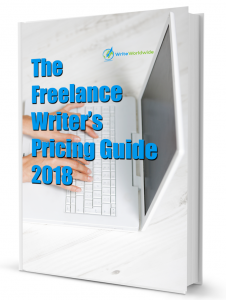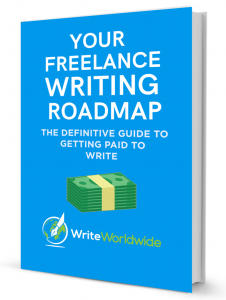I still remember the very first article I wrote. It was a guide for the ski resort of Ischgl, an 870-word masterpiece of travel writing. At least, that’s what it should have been considering it took me the best part of an entire Sunday to write.
It wasn’t terrible nor was it great but it was the first time I got paid to write, and the $15 I made cramped over an Acer tablet with a crappy Bluetooth keyboard was the best money I ever earned.
I know what you’re thinking. $15 for 870 words, a Sunday lost forever, cramped shoulders, and a pain in my back; what the hell did I have to be happy about?
Well, it’s simple, I had just taken the first steps on my journey to becoming a full-time writer, and I knew it.
My $15 start
I never actually looked for a writing job, one kind of found me. I was teaching full-time and supporting a family of three, and although I enjoyed my work, I knew that the only future I had in teaching a bunch of kids English was another year of teaching a bunch of kids English.
I needed an out, and as luck would have it, an old school friend found me on Facebook, saw that I was teaching and asked if I’d ever thought about writing. Long story short, he hired me for his travel company writing SEO articles for $15 a pop.
I spent about six months writing post after post on anything and everything ski-related. I even had a few bylines saying I was an accomplished ski-boarder (disclaimer – I’ve never been on a ski slope in my life!) And at the end of those six long hard months I had exactly what I needed to further my writing career; a fleshed out portfolio.
Admittedly, this was in the days of writing for search engines, so some of those posts read like a keyword addled mess. But I did have experience, and in turn, confidence which led me to apply for any job I could find on job boards such the one on Problogger.
That time I doubled my rates
Thinking I was the Don at this point, I DOUBLED my rates to a whopping $30. Little did I know that it was this ridiculously cheap rate and not my extensive ski-resort portfolio that was landing me jobs with agencies left, right, and centre.
“$30 per 1000 words you say? I think we might be able to work together” was the most common reply I got to my emails. And understandably so. My writing was good and well researched, and I always delivered on time. Why wouldn’t they want to hire me?
Unfortunately, I was working my fingers to the bone and making very little money, and if I’m completely honest, I thought that I wasn’t ready to step into the big leagues where writers got 3-figure fees for one blog post.
Yes, it seems laughable now, but I really was that green for a long time.
My big revelation
During this time I was eager to learn more and so I joined a few Facebook groups, and Steve Roller’s Copywriter Café was the one that had the most effect on me.
Here was a group of people that wanted to help and didn’t laugh at me when I asked stupid questions. I was still a little in awe of these pro-writers as most had years of experience writing sales copy and all kinds of stuff I had yet to try.
But that all changed when a guy named Ed Estlow introduced me to a book called ‘Breaking the Time Barrier.’ It was available as a free download on Freshbooks, and so I downloaded it and devoured it in double-quick time.
Now this book is about charging for value as opposed to the time you spend on a project, and that got me thinking about my work. I wasn’t charging per hour, so that wasn’t relevant to me, but neither was I charging for the true value of the content I produced.
My mindset changed in a flash.
I needed to charge what the content was worth to the client.
Let me give you an example.
Before I had my big revelation, I had a well-known client in the UK men’s fashion industry. I did a series of blog posts for them that saw their online sales coming directly from the blog jump from around $1000 a month to over $10k a month. They pat me on the back, gave me lots of praise, and I basked in the glory of a job well done.
But that series of four blog posts over the course of a month cost the client only $120, yet they brought in over $10k. When I think about it now, I realise how naive I was to not even consider bumping my rates up.
Of course, that changed once I read ‘Breaking the Time Barrier’ which was just a few short months later. I immediately set my blog post rates at $150 minimum and have never looked back since.
But the thing is, nothing about my writing or work ethic had changed. I simply changed my mindset. I no longer felt like an employee eager to please my boss client, I was now offering a service at a set rate indicative of the value my work brought to the table.
To say it was a gamechanger is a bit of an understatement.
Each year since I have increased my rates and I now routinely write posts for around $300. I am not, however, averse to writing for less and still have a few agencies that I write for each month. It’s regular work, and it’s good to have something to fall back on.
But what about your rates?
Now the big question is, what are you charging your clients and are you happy with it? Truth be told, it’s a confusing topic, and the advice coming at you from all angles makes it all the more difficult.
Some say charge per hour.
Others say charge by the word.
While there are those that tell you it’s all about the project fee.
For this reason, we decided that it was about time someone created a resource that writers like yourself could refer to when setting their rates. A resource that didn’t offer fees set in stone but gave base rates and a reasonable range that you could set your rates within.
So we created The Freelance Writer’s Pricing Guide 2018.
If you’d like a free copy just pop your email in the form below and we’ll send you a download link.
Have a look through the guide and let us know what you think in the comments below. We hope to make this an annual release so any feedback you give us will be put to good use.
By the way, I did mention it’s free, right?




Always a pleasure. Thanks for the history lesson, and the lessons embedded in it.
Thanks Princewil
This is really eye-opening.Thank you for sharing.
I’m glad you think so. Hope you like the pricing guide.
Super helpful resource. I’m considering making a few edits and slapping it up as my price list 🙂 Really, if you’re going to show prices on your website (an entirely different topic, I realize) then you must show ranges. 700 words can be way more valuable than 1,600 words if they convey information that is complex or difficult to find. So all my projects come in a price range, and hourly is NOT an option. I tried it for a while an absolutely loathed it. I never charged for all my hours, and so I constantly felt put upon and taken advantage of. (Doesn’t help that that’s what was happening anyway, in general.) I also don’t want clients thinking of dollars flying out of their wallets every time they talk to me. I don’t think per word is any type of viable option for freelancer content marketing writers like me. That’s just for print publications, though it hardly makes sense to do it that way. Anyway, it could be interesting to hear your take on whether freelancers should share pricing on their sites. Meanwhile, thanks for the free resource!
Hi Leah!
Thanks for the positive feedback. I agree, if you charge an hourly rate you are setting yourself and your client up for a confrontation later down the line. Clients have this idea that a 500 word post should take less than an hour to write and if you tell them it took 3 or more, they’ll start to think you’re somehow cheating them out of their money.
As for rates on sites, I think that in some cases it’s a good idea. Say for example if you have set fees for clearly defined services or a subscription service such as ‘4 posts per month at $X.’ Personally though, I prefer to talk to the client first before talking about rates. I genuinely think that if a client won’t call you because your rates are not on your site then that’s probably a client who will try to lowball you on every single project. Whereas a client who truly understands the value of good copy and content knows that they will have to pay accordingly and won’t care one bit that they can’t see your rates online.
What you could do is create a rates card or create a password protected rates page on your site and only give access to clients that you have already qualified as solid leads.
Thanks again for your comment and enjoy the guide!
Very well written and I can so relate.
Thanks!
There is always a start in life. I believe that your acceptance of the $15 price pave the way for your success. Thanks for the article.
Thanks Gideon!
Yes, I’m so happy I took that first job and I owe my old school friend in a big way. His suggestion and offer of a foot in the door paved the way for my writing career.
Let us know if the pricing guide helps you out in any way.
Great article! As writers, we’re still business owners, and it’s amazing how quickly that gets forgotten. I CAN’T IMAGINE writing anyone a 1,000 word blog post for just $30!!!
Thanks Noelle! I can’t imagine doing it now but I’m glad I did so back then 🙂
Outstanding!
I grabbed the ebook and registered to get the pricing guide. Ty!
Thanks a lot John. Let me know if the guide was any use to you.
A friend sent me this post. I wrote Breaking the Time Barrier for FreshBooks. I want to say that it made my day to read how the book inspired you to think differently about your business. Thanks for sharing your story. Cheers
Donald
Thanks Donald!
You really wouldn’t believe how much your book changed my mindset and I recommend it now to anyone who will listen to me 🙂
Thanks again for inspiring so many freelancers to change the way we approach our pricing and business.
Nice post Ciaran, thanks.
I took a look at your Freelancers Pricing Guide and it looks pretty good to me.
One comment on blog posts is that $50 is very low for 1,000 words (although I take on board the various qualifying comments you make). My first blog post was $30 for 800 words (I wrote about 40 of them) followed by $40 for 1,300 – 1,400 words on dog breeds (I wrote about 15)! That was a few years ago.
I’d just like to encourage the guys to increase their prices rapidly at first as they build a portfolio and gain experience – don’t get stuck in a low-paying rut 🙂 The $250 – $300 price point is a good one to aim for.
Also, your pricing for eBooks is spot on. I recently did one for a client and charged $1,000. They were over the moon and will make a lot of money from my work – should have been at least $2,000 😉 That said, there is the possibility of SMM and SEO work with them in the future…
Cheers.
Thanks for the feedback Les.
I’m in full agreement on the low-paying gigs but as you know yourself making even a small jump from $30 to $40 can be a great confidence boost and if you can do that regularly then it shouldn’t take too long to move into the magical three figure territory.
Thanks again for your comments Les and hopefully you can double your rates for the next ebook. 🙂